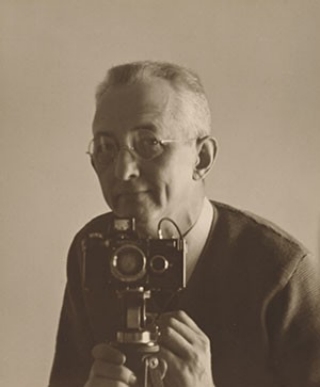Born 1883, Philadelphia, Pennsylvania
Died 1965, Dobbs Ferry, New York
While the art of Charles Sheeler is strongly associated with industrial landscapes and towering skyscrapers, his vision of the modern was equally defined by an engagement with preindustrial artifacts and domestic spaces. After training at the Pennsylvania Academy of the Fine Arts, Sheeler exhibited a group of paintings at the Armory Show in 1913. Moving to New York in 1919, he associated with Alfred Stieglitz’s 291 gallery and the salon of Walter and Louise Arensberg. He also photographed art objects for collectors, galleries, and museums, including the 1924 Early American Art exhibition at the Whitney Studio Club. Sheeler’s prominence was recognized by a survey show at MoMA in 1939.
Looking at vernacular objects through a modernist lens, artists and intellectuals in Sheeler’s circle found a model for directness and formal simplicity. Sheeler himself began collecting Shaker artifacts in the 1920s when renting an eighteenth-century house in Doylestown, Pennsylvania. His appreciation for these objects was purely aesthetic, not antiquarian, and his affinity for their style and craftsmanship is evident in the precise, spare manner of his own painting and photography. Sheeler’s collection inspired Juliana Force, founding director of the Whitney Museum of American Art, to present Shaker Handicrafts in 1935.
Sheeler’s photographs of his Doylestown house in 1917 elegantly highlight geometric forms and rhythms—in the risers and treads of a staircase or a silhouetted nineteenth-century stove. The economy of these early works contrasts with the richly patterned interiors that Sheeler painted of his more modern homes in South Salem, New York, and Ridgefield, Connecticut, between 1926 and 1934. In works such as American Interior the artist does document his collection of Shaker furnishings. Sealed up in the flat, collagelike space of the painting, the formal qualities of the objects are foregrounded. Despite his avowed disinterest in the historical significance of the objects in his collection, such artifacts—including the refectory table in American Interior—would later be immortalized in the Index of American Design.
Jenevive Nykolak
Fillin-Yeh, Susan. Charles Sheeler: American Interiors. New Haven: Yale University Art Gallery, 1987.
Troyen, Carol, and Erica E. Hirshler. Charles Sheeler: Painting and Drawings. Boston: Little, Brown, 1987.
